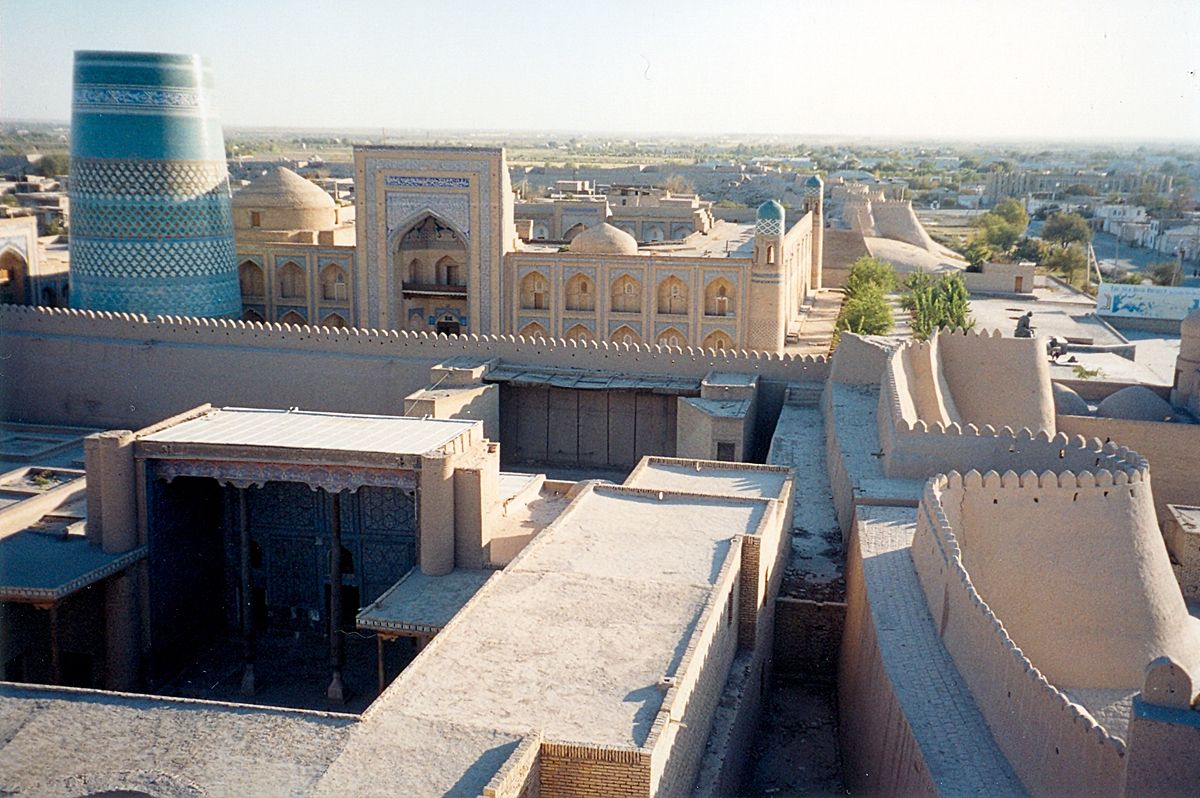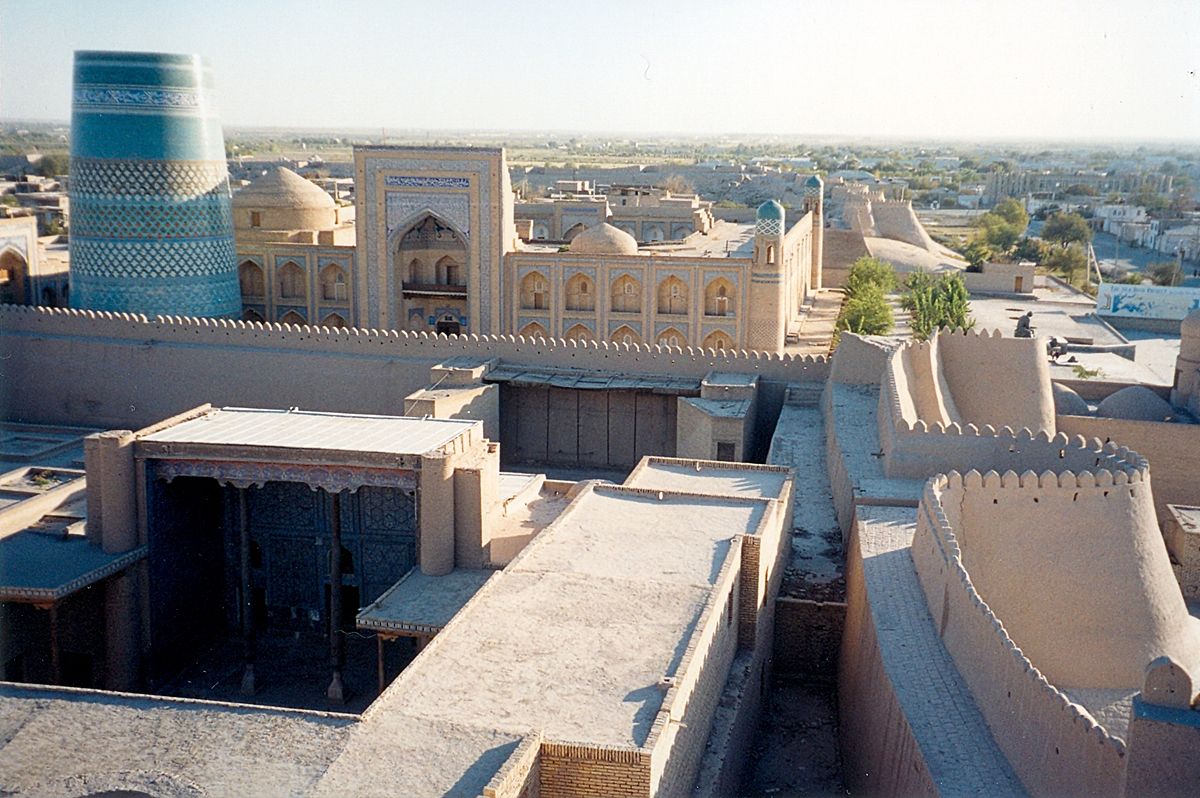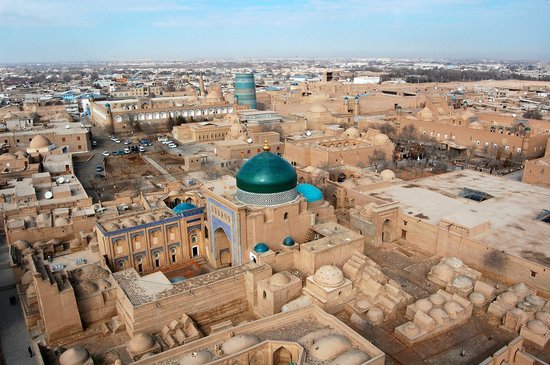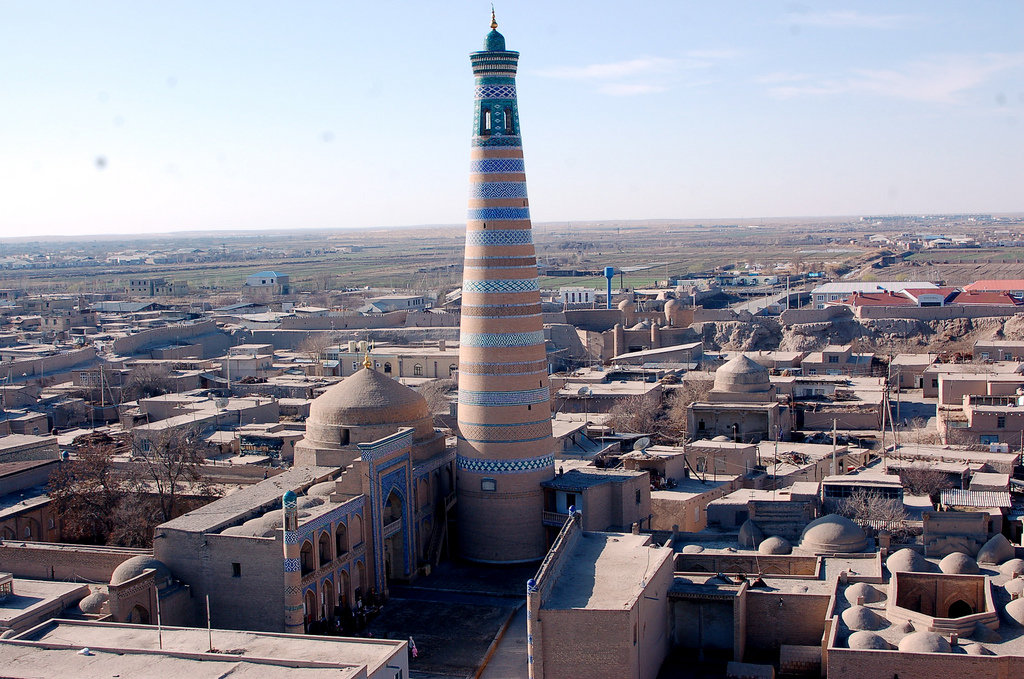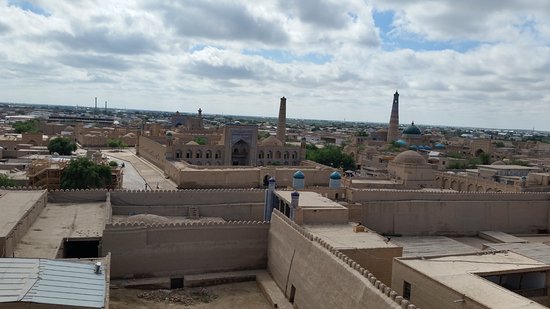Ichan-Qala (literally “internal fortress") forms the inner city of Khiva within the limits or which Khiva was in 16th—17th centuries. Ichan Qala is surrounded by the strong clay wall over 2,200 m long and 7-8 m high. The wall was fortified with semicircular towers. An arrow-shaped gallery with embrasures went along the top of the wall. Defence walls of Ichan-Qala protected Khiva till Nadir-shah's invasion in the middle of 18th century when Iranian troops took Khiva and partly destroyed the fortification system. Khiva was developed under the Qungrad dynasty. By the 20th century its area had been fifteen times as much as Ichan-Qala.
Ichan-Qala, as the historical center of Khiva was entered in UNESCO's list of World Heritage. There are more than sixty architectural monuments: palaces, mosques, madrasah, minarets and mausoleums there. Kunya-Ark fortress was built in the 17th century in Ichan-Qala for khan's administration. Each of Ichan-Qala's four walls has own gates (darvaza). The western gates—Ata- darvaza are close to Kunya-Ark, the northern—Bahcha-darvaza are on the way to Urgench, the eastern—Palvan-darvaza lead to Hazarasp and the Amu-Darya River and the southern—Tashdarvaza to the Qarakum Desert. Ata-darvaza were destroyed in 1920 and restored in the 1970s.

